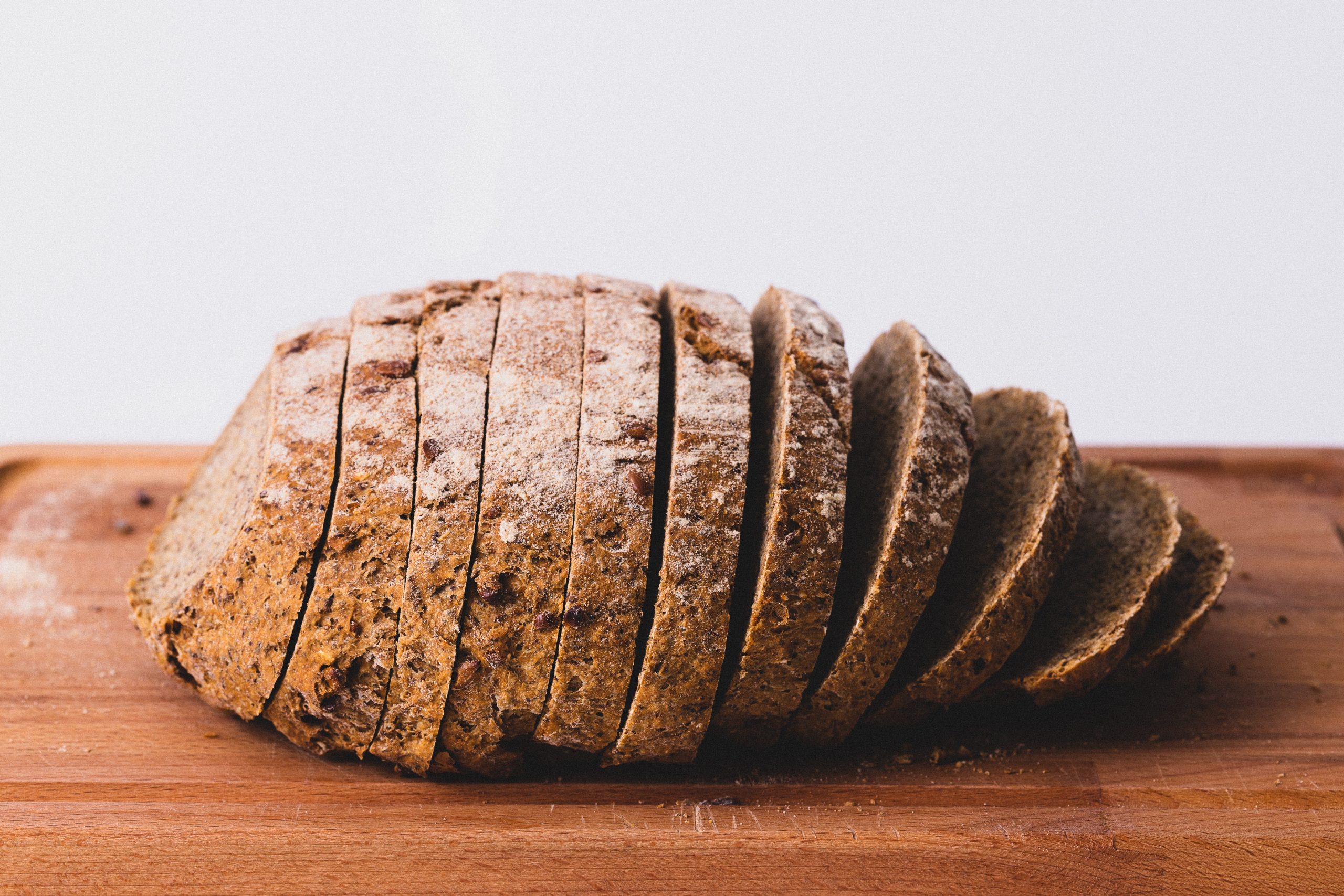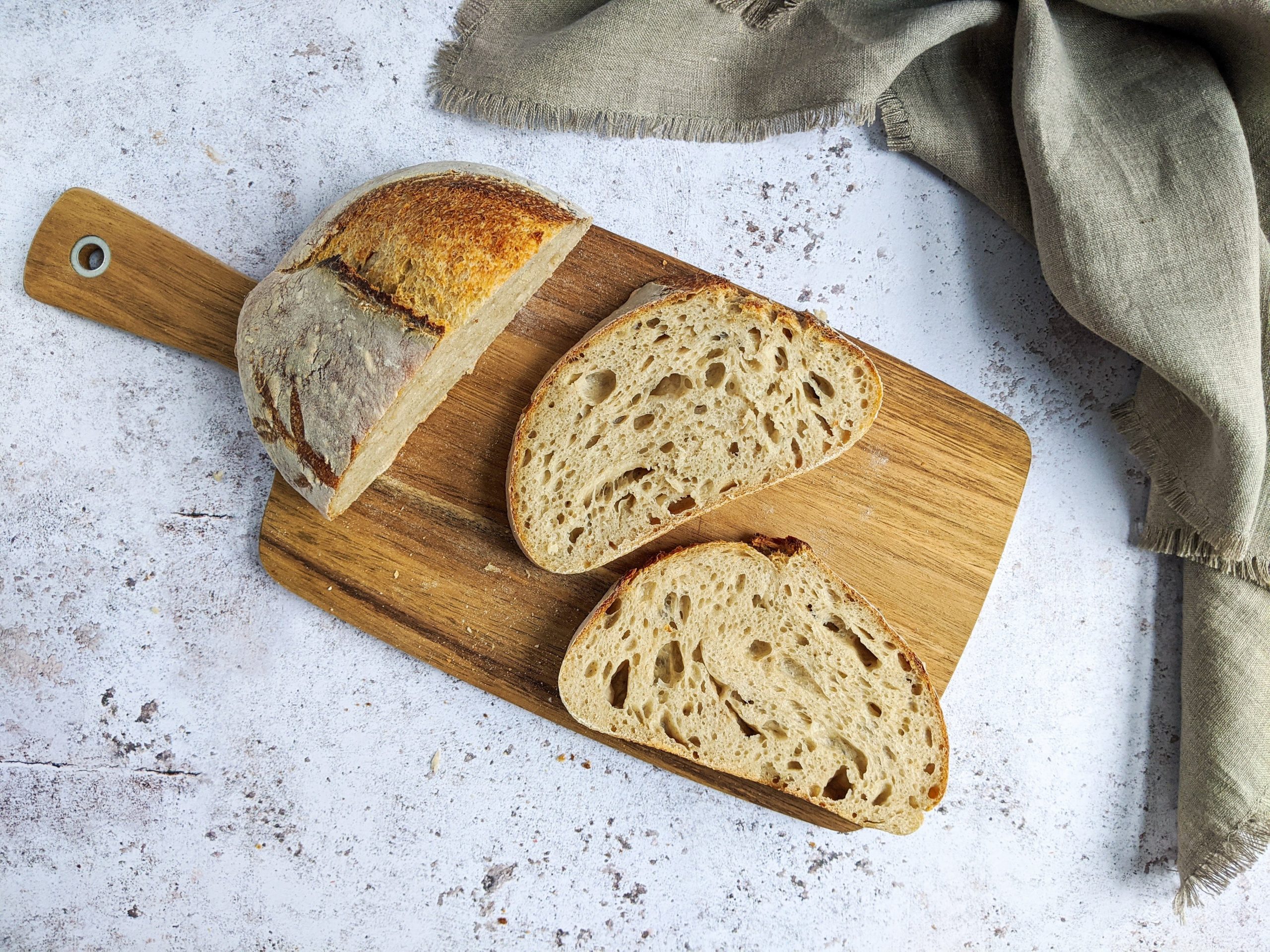There are several ways to keep bread fresh for a longer period. You can store it on your kitchen counter, in a breadbox, or in a cupboard. Another way is to wrap it in a breathable fabric, such as a paper bag. It can last up to five days. However, it is usually stale after seven days.
The exquisite combination of a crisp crust and juicy crumbs that comes with freshly baked bread is unmatched. Bread that has been improperly stored can either become hard and dry or moldy and spongy.
Let’s examine the finest techniques to preserve bread and find out how to store it safely and delectably for longer.

How Long does Bread Last in the Fridge?
Bread aficionados attempt a variety of wrapping and storing methods with variable degrees of success in an ongoing effort to extend the shelf life of their favorite loaves by a few more days.
Bread boxes and plastic wrap could be useful, but what about your kitchen’s large, powerful refrigerator?
Bread is normally not kept in the refrigerator, although we do keep fruits, vegetables, and proteins there. What would happen if you attempted to store bread there, and is there any reason you couldn’t?
We’ll go over the effects of refrigeration on bread in-depth, offer some advice on how to keep bread in the refrigerator and explain why the healthiest bread in the world is best stored in the refrigerator.
What Happens to Bread in the Fridge?
Anyone who has ever purchased, stored, and consumed bread is aware that whether it is freshly baked at home or purchased from a neighboring cafe, there is never enough time before the loaf spoils.
Even the plastic-bagged bread from the grocery store’s center aisle doesn’t last more than a week at most, and that’s with the addition of the sugars and preservatives that are used to make these commercial goods stay longer.
That is why so many of us use resealable plastic bread bags, keep special bread boxes in our kitchens, and take other proactive steps to extend the life of our bread and ensure that not a single slice is wasted.
While these countertop preservation techniques can buy your bread a few extra days, nothing extends its shelf life like putting bread in the fridge.
Depending on the type of bread and how it is stored, storing bread in the refrigerator can extend its shelf life by anywhere from five days to two weeks.
A brief scientific lesson is needed to explain what happens to bread in the refrigerator.
Famous food scientist Nathan Myhrvold claims that when bread is placed in the refrigerator, a chemical process known as starch retrogradation begins. This process is brought on by the re-crystallization of the starch and water molecules in the breadcrumb.
This process is the reason why bread kept in the refrigerator develops a harsh, stale texture, and why many people appear to believe that bread is best kept on the counter or in a box.
When the bread is kept in the refrigerator, it is kept from going bad, and the hardening is just the bread’s natural response to the cold conditions.
By putting your bread in the refrigerator, you may lose some of its original texture and flavor, but it is worth it to avoid mold and other types of deterioration that would render the bread unusable.
Bread should be frozen if you wish to extend its shelf life and stop staleness and mold in its tracks. The fast crystallization of starch that results from freezing effectively halts the chemical reactions that would otherwise occur in room-temperature bread.
Just keep in mind that the bread may get soggy if you leave it out on the counter to thaw after you take it out of the freezer. Instead, let the bread defrost overnight in the refrigerator.
Additional Fridge Storage Tips to Make Bread Last Longer
There are a few things you should be aware of before attempting to store bread in the refrigerator.
First and foremost, if your bread is in a solid loaf form, wrapping it is essential. Make sure that no air or moisture seeps into the creases of the protective material by using at least two layers of kitchen wrap (one plastic and one wax).
Before placing their bread in the refrigerator, some people choose to use a resealable plastic bag as a last outer layer, which could provide some additional security.
Find a spot in your refrigerator, ideally one that is cooler than the rest of the cabinet, where your bread will stay dry and unharmed. If you intend to regularly store bread, designate a special drawer for bread storage and mark it to prevent confusion.If you effectively wrap and store your bread in the fridge, you can add up to five full days to the longevity of your loaf, which makes a big difference if you’re trying to reduce waste and keep track of your budget and inventory.
Additionally, if you wrap bread slices one at a time, you won’t run the risk of letting bread go bad and you’ll have a better sense of your bread inventory at any one time.
Find out which combinations and techniques work best for the bread of your choosing by experimenting with various ways to slice, wrap, and store your bread in the refrigerator or freezer.
It will take some trial and error to determine the optimal method because not every bread will respond in the same manner to different circumstances and environments. Take the scientific method into your own hands and make a mental note of the best practices!
Bring your Bread Back to Life
What is the ideal method for bringing loaves and slices back to room temperature so that you may enjoy them as soon as possible? You know why bread keeps longer in the refrigerator, and you have an idea about how to make it last.
The first step is to remove the bread from the refrigerator and completely unwrap it. This will allow the room temperature to gradually defrost the starch crystals and restore some of the softness.
The temptation to throw the loaf into the microwave and press the defrost button right away could be strong, but doing so will undermine your efforts. The water and starch will heat up too quickly, making your bread practically unusable and internally soggy.
Even if you have to wait a little longer for the consistency to feel normal, the on-the-counter thawing method is the preferable option. The bread is now ready to be cut and enjoyed as you like, although we advise toasting it briefly in a toaster oven to exchange a slight staleness for a crispy crunch.
You won’t even notice the slight hardening that occurred during storage if you use your bread to make french toast or a grilled cheese sandwich because the heat and fat from cooking with those other components will help revive the chilled bread.
When it comes to repairing and revitalizing bread from the freezer or the refrigerator, experimenting is encouraged, just like with preservation techniques. You’ll discover the finest methods for baking each kind of bread and avoid wasting your money.
How do you Know if the Bread is Bad?
Most of the time, bread that is properly preserved will ultimately dry out and become stale.
Stale bread can still be used for croutons, bread puddings, breading, and other things.
It’s still okay to eat hard, dry, stale bread because it hasn’t gone bad.
However, occasionally the bread will rot or become nasty.
Even if it has been properly stored and is still within its expiration date, it is a good idea to look for these symptoms if your bread has been lying around for a few days:
A Strange Odor
Your bread has likely gone rotten if it smells strange. You don’t want to breathe in mold spores, so avoid giving it a close whiff.
Evident Mold
Bread mold can be gray or green, but it can also occasionally be white and fluffy and resemble a flour-dusted surface.
If the bread doesn’t smell terrible and you’re not sure if a white, powdery stuff on the crust is flour or mold, try scraping part of it off with your fingernail.
It’s probably flour if it comes off and is powdery and the bread smells wonderful.
Mold is most likely present if the white stuff peels off in discrete clusters.
Can Old Bread Make you Sick?
You shouldn’t consume moldy bread, even though “old” bread may merely be stale and dry and still be okay to eat.
Don’t just toss out solitary moldy pieces of bread; throw the entire loaf away if there are any symptoms of mold or mildew on the bread or inside the package.
While heating mold can kill the microorganisms, toasting or heating moldy bread won’t make it safe to consume because the bread would burn and become inedible at temperatures high enough to kill mold and bacteria.
Eating moldy bread might not be harmful to someone with a strong immune system or it might just make them sick.
The eyes, nose, and throat could become irritated by bread mold if you have mold sensitivity.
Can Bread Last a Month in the Fridge?
Actually, no. Do I remember doing it once or twice? Sure. While I don’t recommend you try to push the shelf life limits of your bread, I would suggest thoroughly checking the bread for any signs of mold or dryness before consuming it. Place your bread in the freezer to extend its shelf life.
Conclusion
Even if it takes some extra work to increase the shelf life, the refrigerator is an underappreciated option to store bread and keep it fresh for a long time. Make the most of each slice by preserving your store-bought bread or our Superfood Bread.
Just keep in mind that the sooner you eat your bread, the more chance it will have of recovering to normal after spending more time in the refrigerator.
Bread pieces can be individually wrapped, sealed, and kept in the refrigerator for easy access as a simple solution to this issue. Slices need to be cut and wrapped one at a time, but the time and effort you’ll save in the end are worth it.

